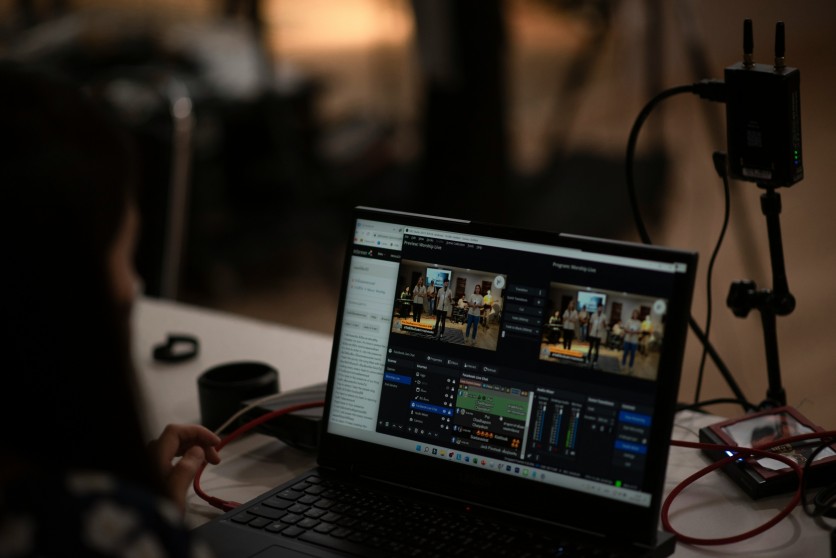OBS Studio is one of the most trusted tools for gamers who want high-quality gameplay recording and streaming. Its open-source platform and versatile customization options allow users to tailor settings to different hardware and content styles. Whether you're saving highlights, creating YouTube videos, or livestreaming on Twitch, OBS provides the controls you need to capture crisp, professional footage.
Achieving smooth, lag-free gameplay recording depends heavily on properly configuring OBS. With the latest hardware trends and software updates in 2025, optimizing your OBS settings is crucial. Using incorrect encoders, bitrates, or resolutions can cause choppy video, frame drops, or even in-game lag, affecting both recordings and live streams. This guide breaks down the best OBS settings 2025 for gameplay recording and streaming. It covers output, video, and advanced settings, and provides practical streaming tips and troubleshooting advice to ensure a smooth, high-quality recording experience.
Best OBS Settings 2025 for Lag-Free Gameplay Recording
Proper OBS settings in 2025 are the foundation for smooth, high-quality gameplay recording. Adjusting output, video, and advanced settings ensures the best balance between performance and visual quality.
- Choose the Right Encoder: Use NVENC on NVIDIA GPUs, AMD AMF on modern AMD GPUs, or x264 on high-end CPUs. Hardware encoders reduce CPU load and minimize lag.
- Set the Ideal Bitrate: For 1080p 60 FPS, 12,000–18,000 kbps is recommended. Higher bitrates improve video clarity but require strong hardware.
- Select the Best Recording Format: MKV is reliable and prevents corrupted files if OBS crashes. MP4 is editor-friendly but risky if recording is interrupted.
- Resolution Settings: Match the Base (Canvas) resolution to your monitor (1080p or 1440p), and scale the Output resolution to 1080p for smooth playback. Lower to 720p 60 FPS if needed.
- Frame Rate (FPS): Use 60 FPS for gameplay; 30 FPS is only suitable for low-end systems or cinematic content.
- Downscale Filter: Lanczos (36 samples) gives the sharpest quality; Bicubic is lighter on older GPUs.
- Advanced Encoder Settings: Set the keyframe interval to 2, use the High profile for better compression, and adjust the presets based on GPU or CPU to reduce lag.
Essential Tips for Gameplay Recording and Streaming Using OBS
Optimized OBS settings are essential, but proper audio, scene management, and hardware use are equally critical for smooth gameplay recording.
- Audio Settings: Set the sample rate to 48 kHz and the bitrate to 160–320 kbps, depending on quality needs. Select primary microphone and game audio devices manually to prevent sync issues.
- Scene Optimization: Separate gameplay, webcam, overlays, and audio inputs. Avoid oversized images or high-res overlays to reduce GPU load. Group elements for a responsive preview.
- Manage System Resources: Close unnecessary apps, such as browsers, Discord overlays, or RGB software. Ensure GPU has at least 10–20% headroom. Use SSDs for storage and confirm the PC's specs match the desired resolution and FPS.
Read more: Streaming Success Blueprint: Expert Tips to Grow Your Gaming Channel and Build a Loyal Audience
Additional Tips for Troubleshooting and Enhancing OBS Recording Experience
Even with perfect settings, real-world performance varies. These additional tips help avoid lag spikes, crashes, and quality drops.
1. Use the OBS Auto-Configuration Wizard
This built-in tool analyzes your hardware and recommends optimal settings. It's especially helpful for beginners or after major hardware or software updates.
2. Monitor System Temperatures and Usage
High temperatures cause throttling, resulting in lag.
- Use tools like MSI Afterburner or HWMonitor.
- Keep GPU temps under 80°C and CPU temps under 85°C for stable recording.
- Clean dust from vents and ensure good airflow.
3. Keep OBS and GPU Drivers Updated
New versions often include performance improvements, encoder upgrades, and bug fixes.
- Update OBS through the built-in updater.
- Check NVIDIA, AMD, or Intel's driver software monthly.
Conclusion
Smooth, high-quality gameplay recording in OBS depends on using the right settings and managing your hardware effectively. Optimizing encoders, bitrates, video resolution, frame rates, and advanced controls helps minimize lag and maximize quality. Combined with proper audio setup, smart system resource management, and regular performance monitoring, these adjustments ensure OBS delivers a stable recording experience in 2025.
Every gaming PC is unique, so creators should test and fine-tune their OBS setup to match their hardware. With the right configuration, OBS Studio can record gameplay smoothly and reliably—whether you're streaming live or capturing footage for future content.
Frequently Asked Questions
1. How do I fix lag spikes during OBS gameplay recording?
Lower your resolution or FPS, switch to a hardware encoder like NVENC, or close background programs consuming CPU/GPU resources.
2. What is the best encoder for OBS recording?
NVENC (for NVIDIA GPUs) provides the best balance of quality and performance for most users.
3. How do I sync audio and video in OBS?
Adjust audio delay in the Advanced Audio Properties menu or ensure all devices use the same sample rate.
4. Can OBS record gameplay in 4K smoothly on mid-range PCs?
Not typically. Recording in 4K requires powerful GPUs and high bitrates. Mid-range systems perform best at 1080p.
ⓒ 2025 TECHTIMES.com All rights reserved. Do not reproduce without permission.





